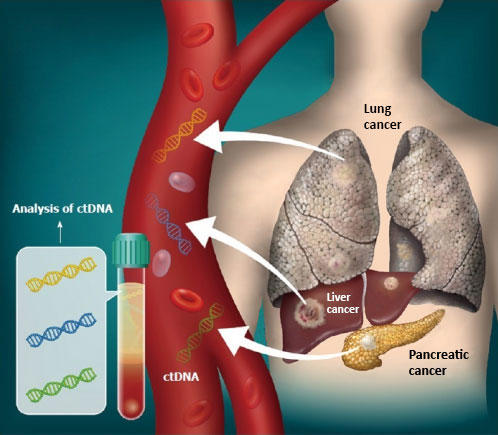The term 'metabolic syndrome' (MetS) encompasses a group of factors, such as abdominal obesity, hypertension and insulin resistance, that together increase the risk of cardiovascular disease and type 2 diabetes. A new study suggests that prenatal exposure to a combination of endocrine disrupting chemicals (EDCs) is associated with a poorer metabolic health in childhood, which in turn may contribute to an increased risk of metabolic syndrome in adulthood. The research, led by the Barcelona Institute for Global Health (ISGlobal), a centre supported by the "la Caixa" Foundation, has been published in JAMA Network Open.
EDCs are chemical substances that are so named because of their ability to interfere with the functioning of our hormonal system, growth, energy balance and metabolism and whose exposure, given their ubiquity in our environment, is difficult to escape. Previous studies have already shown a link between individual exposure to some of these compounds during the prenatal phase and some of the factors that make up the metabolic syndrome, particularly obesity and blood pressure. This time, as part of the ATHLETE project, the team set out to assess the combined impact of these substances on all metabolic syndrome factors.
The study involved 1,134 mothers and their children from six European countries (Spain, France, Greece, Lithuania, Norway and the United Kingdom), all volunteers from the HELIX (Human Early Life Exposome) cohort. Prenatal exposure to a total of 45 endocrine disruptors was analysed through blood and urine samples collected from the mothers during pregnancy or from the umbilical cord after birth.
Later, when the children were between 6 and 11 years old, they were followed up, including a clinical examination, interview and collection of biological samples. This yielded data on waist circumference, blood pressure, cholesterol, triglycerides and insulin levels, which were aggregated to obtain a risk index for metabolic syndrome.
Mercury, PFAS, organochlorine pesticides and PBDEs
Statistical analysis showed that mixtures of metals, perfluoroalkylated and polyfluoroalkylated substances (PFAS), organochlorine pesticides and flame retardants (or PBDEs) were associated with a higher risk of metabolic syndrome. In the case of metals, the association observed was mainly due to the effect of mercury, the main source of which is the intake of large fish.
PFASs are one of the most widely used families of chemical compounds, being used in pesticides, paints, non-stick pans or fast food packaging, among many other common uses. Because of their persistence, they are also known as the 'forever chemicals'. Also very persistent are organochlorine pesticides, which were already banned in Europe in the 1970s, but to which we are still widely exposed due to their permanence in the environment.
Different results according to sex
"We also observed that associations were stronger in girls for mixtures of PFASs and polychlorinated biphenyls (PCBs), while boys were more susceptible to exposure to parabens. Since endocrine disruptors interfere with sex steroid hormones, these differences fall within what would be expected", explains Nuria Güil Oumrait, ISGlobal researcher and first author of the study.
"Our results suggest that exposure to widespread mixtures of endocrine disruptors during pregnancy may be associated with adverse metabolic health in both boys and girls. This association may contribute to the current increase in the prevalence of lifetime metabolic syndrome, which currently affects 1/4 of the adult population, with upward trends evident even among young people", concludes Martine Vrijheid, co-director of ISGlobal's Environment and Health over the Lifespan programme and senior author of the study.
Reference
Güil-Oumrait N, Stratakis N, Maitre L, Anguita A, Urquiza J, Fabbri L, Basagaña X, Heude B, Småstuen Haug L, Kaur Sakhi A, Iszatt N, Keun H.C, Wright J, Chatzi L, Vafeiadi M, Bustamante M, Grazuleviciene R, Andrušaitytė S, Slama R, McEachan R, Casas M, Vrijheid M. Prenatal Exposure to Chemical Mixtures and Metabolic Syndrome Risk in Children. JAMA Network Open. 2024; 7(5):e2412040. doi:10.1001/jamanetworkopen.2024.12040






